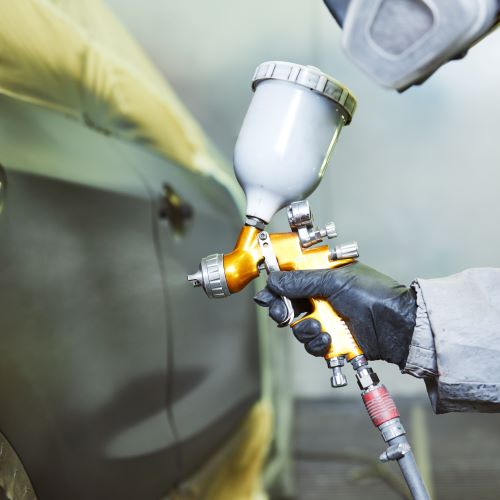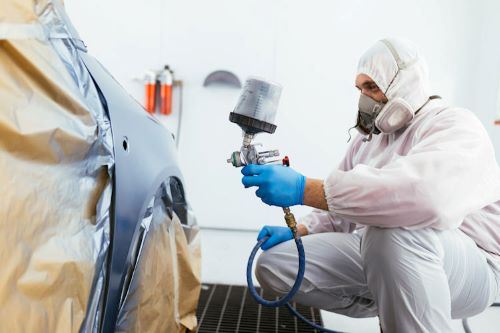All Products are in stock
and shipped from France.
Delivery within 48 hours.
and shipped from France.
Delivery within 48 hours.
Our categories
 How to use a paint lab ?
How to use a paint lab ?
The painter's laboratory is not an article intended for the painter of Fine Arts in watercolor or oil painting but only for what the trade and spray painting. Its existence becomes evident when designing the workspace, which includes the painter's equipment and facilities.
Of course, the artist or the painter operates in a workshop because it is the work of a craftsman. However, we speak of a laboratory, in the case of the painter who decorates bicycles or motorcycles, or even who paints car bodies, because the paints used are often similar to chemical products.
Not only because they are often dangerous, flammable and often harmful products, or even sometimes corrosive, but also because the mixtures are very precise, technical and they are made with precision scales as in laboratories.
Although it is not totally forbidden to practice paint mixing in the paint storage room, as it is in truth very often the case in the field, it is recommended to separate the spaces from paint storage, paint preparation space.
Of course, it is very practical to have all the products, all the colors and the additives at hand when mixing.
The paint lab
As in the field of body paint, there are not only water-based paints : you will always find solvent-based primers and clearcoats, it is advisable to work with certain precautions.
Suction is one of the essential points : it is imperative to have an air extractor that works continuously, in order to renew the air in the paint storage room.
According to the European standards in force , it is necessary to have a motor capable of completely renewing the air in the room approximately 6 to 10 times per hour at least. To choose your engine, you must therefore calculate the volume of the room and multiply it by 6.
As for the space for preparing the mixture, it is a fairly small surface for which it is necessary to have a high precision balance. This scale, to which we will take great care, never placing heavy objects on the surface and preserving it from shocks and mistreatment, is a professional precision tool that can cost several thousand euros. Therefore, it is important to protect it with plastic, especially at the level of the screen and the keys which can suffer from splashes and drips of paint.
It is wise to install an additional one-time extraction which will come capture the solvents as close as possible to the mixing pot. This is easily achieved with a flexible hose that is connected to the engine. Or, there are so-called air extraction arms for professionals, but this is more reserved for large amounts of mixed paints.
 Risks of ignition with solvents
Risks of ignition with solvents
In order to avoid any risk of ignition or explosion, it is important to scrupulously ensure the placement of electrical installations and all kinds of machinery that can create sparks or heat, which could ignite the solvents. As much as possible, we will try to evacuate his equipment which presents a risk. There are in particular explosion-proof ceiling lamps.
European standards require the presence and installation of ATEX motors for everything concerning suction tables and suction hoods. Propeller motors are built in a specific way, which separates the propeller from the motor in an airtight manner: thus, the solvent fumes never come into contact with the electrical areas.
The painter's laboratory generally has a automatic mixing cabinet for concentrated colors and also a paint gun cleaner.
Individual protection for the painter
All this equipment is separated from the workshop and is confined in this space called the painter's laboratory, which is a space where the air is sucked in and where the products are stored securely.
Even if there is an air extraction, the painter must always enter this space with a paint mask. This painting mask contains cartridges, which filter the solvents thanks to activated carbon.
It is very important, at the end of the work, to store your work overalls and especially your mask, outside the laboratory, well packed in its protective bag, because the mask can become loaded with solvents and become contaminated if it is inadvertently placed next to the paint cans.
Paint booth and ventilation systems
Hydro-dipping transfer tank














































































